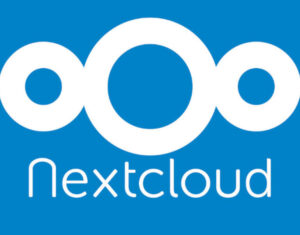Jack Wallen lists his top choices for best Linux distributions for new users. Did yours make the list?

Image: Jack Wallen
The age-old question has returned, one that divides a certain community faster than a penguin can devour a mouthful of krill. That question? What are the best Linux distributions for new users? When you ask the question of the Linux community, they inevitably answer with the distribution they use. Why wouldn’t they? Loyalty has always been set at a fairly high bar with Linux. You find a distribution that’s perfect for you, and you want everyone to use it. Thing is, you probably forget that your Linux skills are likely considerably higher than the average user–and especially the new user.
You have to harken back to a time when your knowledge of the platform was at its most basic. Back then, would you recommend an Arch-based Linux distribution or openSUSE to a new user? Remember, we’re talking about people who’ve never laid eyes on the Linux operating system. These are the users who have no idea what open source is, who Linus Torvalds is, or how to even configure a network connection with a GUI.
In other words, the casual user–those who spend most of their time on social media, maybe watching a bit of TV, listening to music, writing a paper or two, and occasionally communicating with email.
Believe it or not, there are Linux distributions perfectly suited for that user type. Let’s find out what those distributions are.
SEE: Linux service control commands (TechRepublic Premium)
Ubuntu Linux
You might think it’s wrong of me to lead off with a Linux distribution that includes a desktop unlike anything users have ever experienced. Although that would be a valid point, Ubuntu has done such a remarkable job of making the desktop interface so simple anyone can use it.
Even if you don’t know the bits and pieces of the desktop, it takes seconds to figure out that you really don’t need to know anything about GNOME to use it here. Click an icon on the launcher and start using an application. Eventually those users will figure out that the small square with the dots opens a window that gives access to other applications. From there, everything falls into place.
Ubuntu Linux has some of the best hardware support of any operating system on the market, so new users can be sure almost anything they plug into it will work. Because Ubuntu is incredibly stable, new users won’t find themselves having to solve problems on the desktop. “It just works” has never been so applicable to an operating system.
elementary OS
elementary OS was my distribution of choice for a few years. I eventually gave it up when I purchased System76 hardware, wanting to take advantage of the optimizations found in Pop!_OS. For anyone looking to use an elegant and incredibly simple desktop operating system, you cannot beat elementary OS.
This particular distribution takes a number of cues from the macOS interface, without looking like an attempted clone. In fact, elementary OS is probably the only desktop operating system that does as good of a job as macOS at integrating design elements throughout the experience. That across-the-board familiarity leads to more than just an aesthetic appeal–it simplifies everything for the OS.
This Linux distro also eschews tossing more apps at the desktop than necessary, and opts for a more minimal approach. Out of the box, this does mean users will have to install a few apps, but with the help of one of the better App Stores on the market, even that task is made simple.
Kubuntu
It might surprise you to find this particular distribution on the list, but Kubuntu perfectly marries Ubuntu and the KDE desktop into an operating system that makes sense for new users. Anyone who has worked with a traditional desktop interface will feel right at home. In fact, for those who prefer a Windows 7-like interface, there’s no better place to be. To make this even more appealing, Kubuntu is based on Ubuntu, which is already at the top of nearly every user-friendly distribution list.
Although KDE does have a few features that are better suited for those with a bit more skill, those elements don’t get in the way of a new user effectively working with the desktop.
Linux Mint
I add this distribution with a caveat: It needs to be the Cinnamon edition of Linux Mint. Xfce and Mate aren’t as well suited for new users, but sprinkle on some Cinnamon and you’ve got a recipe that’s sure to please users who have never even dipped a toe into the Linux waters.
Linux Mint is one of the best Ubuntu-based distributions for new users. It enjoys that same rock-solid base, hardware detection, and ease of use found in Ubuntu. Instead of opting for the GNOME desktop, Linux Mint goes a route that will be much more familiar to new users–with a standard task bar, desktop menu, and system tray. Although not the most beautiful desktop on the market, it’s immediately accessible and user-friendly.
Pop!_OS
Pop!_OS might seem like an odd choice, but hear me out. Of all the distributions I’ve used (and I’ve used a ton of them), Pop!_OS makes everything easier. From operating system and firmware upgrades to seamless hardware integration, Pop!_OS takes the Linux operating system to ease-of-use levels no other distribution has. Although the new user does have to familiarize themselves with the GNOME desktop, once they do, it’s smooth sailing.
Pop!_OS also takes the GNOME desktop and adds a bit of extra polish to it. With a tweaked theme that is sure to please everyone, and the ability to work with tiling windows (if that’s your jam), you really can’t go wrong with Pop!_OS. For the icing on the cake, if you purchase System76 hardware, that hardware integration is taken to yet another level of spectacular.
Fedora Linux
Prior to Fedora 33, I would never have dreamed of including this distribution on a list for new users, but what the developers have done with their latest iteration makes it so good that it would be a mistake to leave it out. To experienced Linux users, Fedora 33 might be too bland; however, for new users, this release hits that sweet spot between what has always made Linux stand out in the crowd and just works. Fedora 33 is that Linux distribution that welcomes new users, but also gives them plenty of room to grow and learn. If a user wants to use the desktop and never venture beyond simplicity, Fedora can do that. For those users who eventually get bored and want to explore a bit more, Fedora can do that as well.
Deepin
Deepin not only welcomes new users, it allows them to use what many consider to be the closest thing to a work of art a computer desktop can be. That’s how good the Deepin interface is. It’s not only the most elegant desktop on the market, it’s also incredibly user-friendly. In fact, the Deepin desktop might be the closest thing to a marriage between Windows 7 and macOS Big Sur you’ll ever find.
Subscribe to TechRepublic’s How To Make Tech Work on YouTube for all the latest tech advice for business pros from Jack Wallen.
Also see
Source of Article



